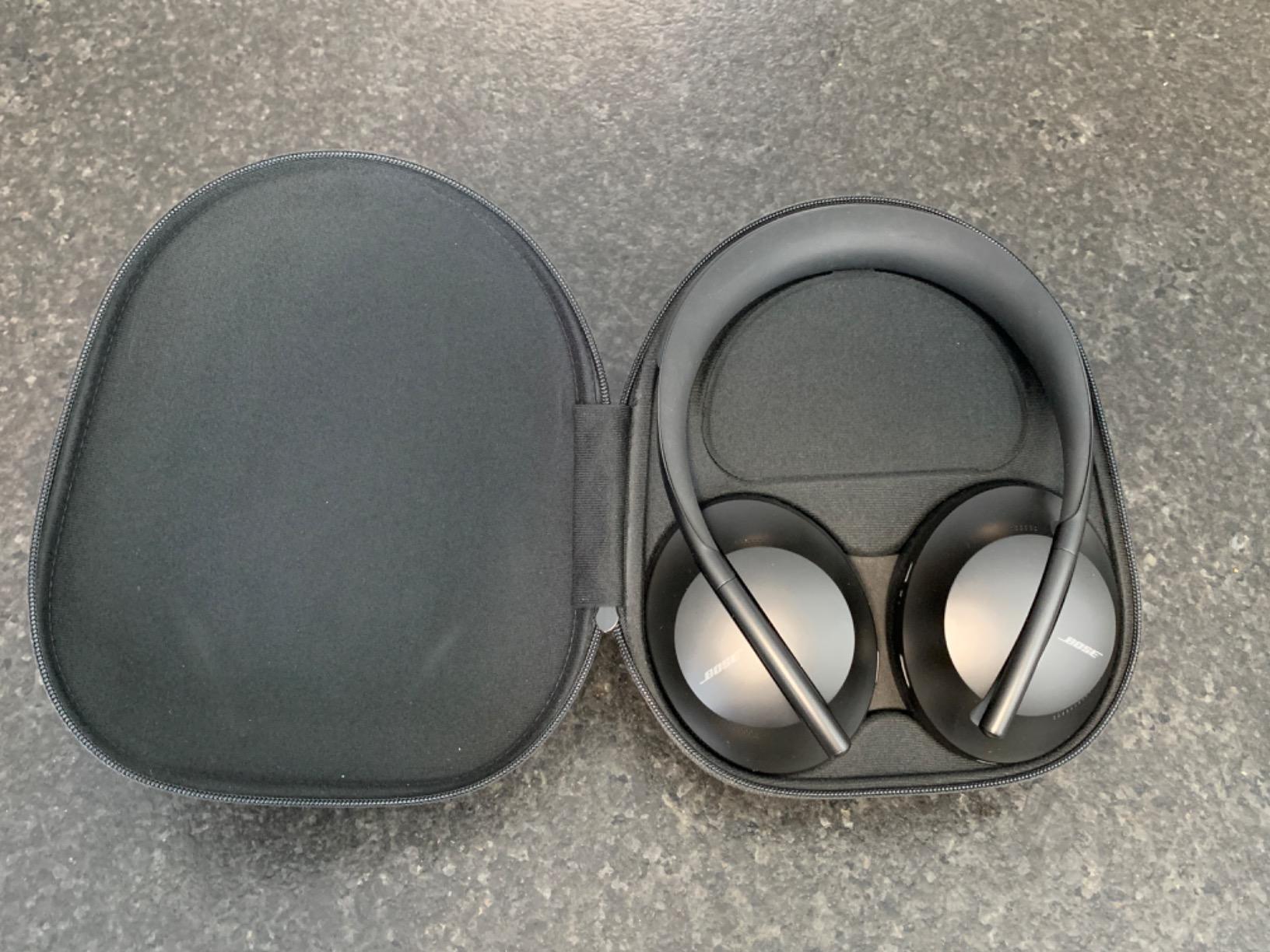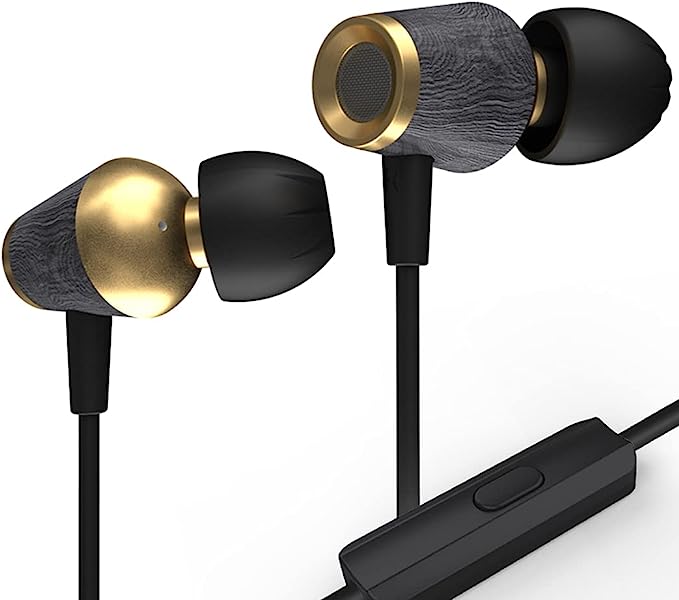Panasonic RP-HT161-K Headphones: Affordable Quality Sound Explained
Update on Feb. 22, 2025, 4:34 a.m.
Sound is an integral part of our daily lives. From the gentle hum of a refrigerator to the complex melodies of our favorite music, we are constantly immersed in a world of auditory experiences. But how much do we really understand about the sounds we hear and the devices we use to listen to them? Let’s explore the fascinating world of sound and take a closer look at how the Panasonic RP-HT161-K headphones bring that world to our ears.

A Journey into Sound
Before we dive into the specifics of headphones, let’s take a moment to appreciate the fundamental nature of sound. Sound, in its simplest form, is a vibration that travels through a medium, such as air, water, or even solids. Imagine dropping a pebble into a calm pond. The impact creates ripples that spread outward, carrying energy away from the source. Sound waves are similar, but instead of water, they travel through air (or other media) as longitudinal waves.
This means that the air molecules don’t travel along with the wave like a surfer on an ocean wave. Instead, they oscillate back and forth, creating areas of compression (where the molecules are squeezed together) and rarefaction (where they are spread apart). These compressions and rarefactions propagate through the air, carrying the sound energy.
Two key properties of a sound wave determine what we hear: frequency and amplitude. Frequency refers to the number of compressions (or rarefactions) that pass a given point per second, measured in Hertz (Hz). A higher frequency means more vibrations per second, which we perceive as a higher pitch. A low-frequency sound, like a deep bass drum, might have a frequency of 50 Hz, while a high-pitched whistle might be 10,000 Hz or higher.
Amplitude, on the other hand, refers to the intensity of the vibration – how much the air molecules are displaced from their resting position. A larger amplitude means a more powerful sound wave, which we perceive as loudness. Amplitude is often measured in decibels (dB).
Our ears are remarkable organs that can detect these tiny variations in air pressure and convert them into electrical signals that our brains interpret as sound. The human ear is generally capable of hearing sounds between 20 Hz and 20,000 Hz, although this range can vary from person to person and tends to decrease with age.

From Electricity to Sound: The Magic of Headphone Drivers
So, how do headphones take an electrical signal from your phone or computer and turn it into the sounds you hear? The answer lies in a crucial component called the driver. The driver is essentially a miniature loudspeaker, and it’s the heart of any headphone.
Headphones, like the Panasonic RP-HT161-K, typically use dynamic drivers. These drivers work on the principle of electromagnetism. Inside the driver, you’ll find a voice coil (a coil of wire), a diaphragm (a thin, flexible membrane), and a magnet.
When an electrical audio signal flows through the voice coil, it creates a fluctuating magnetic field. This field interacts with the permanent magnetic field of the magnet, causing the voice coil to move back and forth. Because the voice coil is attached to the diaphragm, this movement causes the diaphragm to vibrate as well. These vibrations create sound waves in the air, just like the ripples in our pond analogy, which then travel to your ears.

The Dynamic Driver: A Closer Look
The dynamic driver is the workhorse of the headphone world, and for good reason. It’s relatively simple in design, robust, and capable of producing a wide range of frequencies. The diaphragm is typically made of a lightweight but stiff material, such as plastic or paper, that can vibrate rapidly and accurately. The voice coil is usually made of copper or aluminum wire, chosen for its electrical conductivity.
The quality of the magnet is also crucial. A stronger magnet allows for more precise control of the diaphragm’s movement, resulting in a more accurate and powerful sound. This is where neodymium comes into play.
Neodymium Magnets: The Power Within
The Panasonic RP-HT161-K headphones utilize neodymium magnets in their drivers. Neodymium is a rare-earth element that, when alloyed with iron and boron, creates incredibly powerful permanent magnets. These magnets are significantly stronger than traditional ferrite magnets, which means they can generate a more intense magnetic field within the driver.
This stronger magnetic field has several advantages. First, it allows the driver to move the diaphragm with greater force and precision, resulting in a more accurate reproduction of the audio signal. Second, it improves the driver’s efficiency, meaning it can produce louder sound with less power. This is particularly important for portable devices with limited battery life. Third, neodymium magnets are relatively lightweight, which helps to keep the overall weight of the headphones down, improving comfort.
Panasonic RP-HT161-K: Unpacking the Technology
Now, let’s turn our attention specifically to the Panasonic RP-HT161-K. These over-ear headphones are designed to deliver a balanced and enjoyable listening experience at an affordable price. They achieve this through a combination of thoughtful design and well-chosen components.
The RP-HT161-K features 30mm drivers, a size that strikes a good balance between portability and sound quality. Larger drivers can generally produce deeper bass, but they also tend to make headphones bulkier. The 30mm drivers in the RP-HT161-K provide a satisfying low-end response without sacrificing comfort.
Frequency Response: The Range of Sound
One of the key specifications for any headphone is its frequency response. This refers to the range of frequencies that the headphone can reproduce, typically measured in Hertz (Hz). The RP-HT161-K boasts a frequency response of 10 Hz to 27 kHz.
This range is wider than the typical human hearing range (20 Hz to 20 kHz). While you won’t directly “hear” sounds above 20 kHz, a wider frequency response generally indicates a more capable driver that can handle a broader range of frequencies with greater accuracy and detail. It suggests that the driver is less likely to struggle or distort when reproducing complex sounds with a wide range of frequencies.
Impedance: Headphones and source-matching.
While not explicitly stated in the provided product information, headphone impedance is an important technical specification, even if we can only make educated guesses here. Impedance, measured in ohms (Ω), is a measure of how much a headphone resists the flow of electrical current. Headphones with lower impedance (typically under 50 ohms) are easier to drive, meaning they can achieve a satisfactory listening volume with less power. This makes them a good choice for use with portable devices like smartphones and laptops, which have relatively weak built-in amplifiers. Headphones with higher impedance (over 100 ohms) require more power to drive effectively and are often paired with dedicated headphone amplifiers.
Given the RP-HT161-K’s intended use with a variety of devices, including phones and laptops, it’s reasonable to assume that it has a relatively low impedance, making it easy to drive without requiring a separate amplifier.

XBS: Deeper Bass, Explained
The RP-HT161-K incorporates Panasonic’s XBS (Extra Bass System) technology. While the precise technical details of XBS are proprietary, the general principle behind such systems is to enhance the low-frequency response of the headphones. This is often achieved through careful design of the acoustic chamber (the space behind the driver) and the use of ports or vents.
These ports are carefully tuned to resonate at specific low frequencies, effectively amplifying the bass output. Think of it like blowing across the top of a bottle – the air inside the bottle resonates at a particular frequency, creating a sound. The XBS port in the RP-HT161-K works similarly, enhancing the bass frequencies without requiring larger drivers or more power.
Comfort and Design: Beyond the Sound
Sound quality is paramount, but comfort is also crucial, especially for headphones designed to be worn for extended periods. The RP-HT161-K features an over-ear design, meaning the earcups completely surround the ears. This design helps to isolate the listener from external noise, creating a more immersive listening experience. The earpads are padded with soft, plush material, providing a comfortable fit. The headband is also adjustable, allowing you to customize the fit to your head size. The lightweight construction of the headphones further enhances comfort, minimizing fatigue during long listening sessions.
The 6.5-foot (approximately 2-meter) cord provides ample length for connecting to a variety of devices, whether you’re sitting at your desk, relaxing on the couch, or using a laptop on the go. The standard 3.5mm connector ensures compatibility with a wide range of devices, including smartphones, tablets, computers, and audio players.
The Wired Advantage
In an increasingly wireless world, it’s worth considering why wired headphones like the RP-HT161-K still hold a valuable place. While wireless headphones offer convenience, wired headphones often provide a more reliable and consistent connection, free from the potential for dropouts or interference that can sometimes plague wireless connections. Furthermore, wired headphones don’t require batteries, eliminating the need for charging and ensuring that you can always listen as long as your source device has power. And, for many, the wired connection offers the potential for higher fidelity audio, as it avoids the digital compression that is often necessary for wireless transmission.
Conclusion: Affordable Quality, Accessible Science
The Panasonic RP-HT161-K headphones offer a compelling combination of sound quality, comfort, and affordability. They are a testament to the fact that you don’t need to spend a fortune to enjoy a satisfying listening experience. By understanding the basic principles of sound, electromagnetism, and headphone design, we can appreciate the engineering that goes into creating even seemingly simple devices like these headphones. The RP-HT161-K makes the science of sound accessible to everyone, allowing us to connect with our audio world in a richer and more meaningful way.



























































